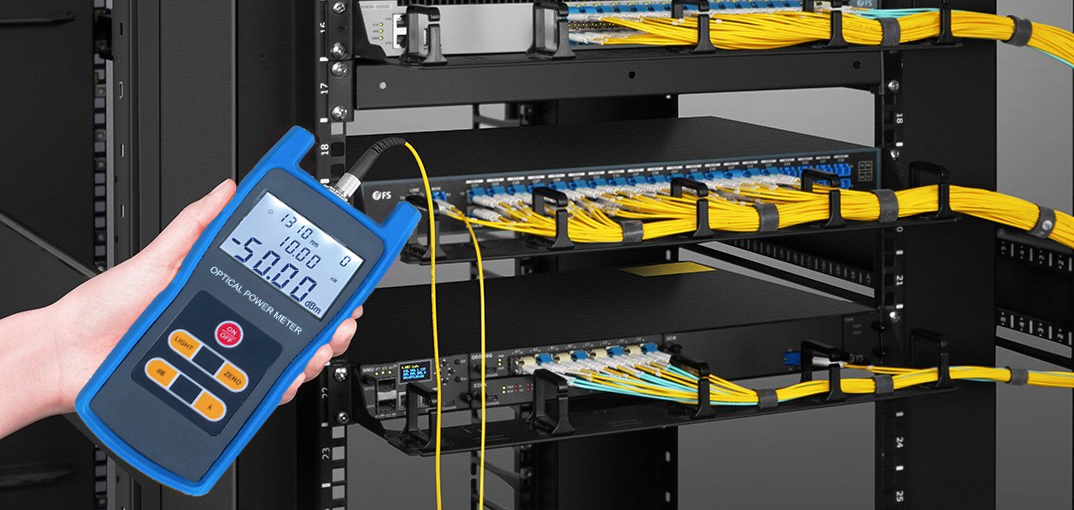Advanced fibre testing equipment identifies defects and maintains fibre integrity.
Advanced fibre testing equipment identifies defects and maintains fibre integrity.
Blog Article
Discover the Value of Optical Fiber Testing in Modern Telecommunications
In the world of modern telecommunications, the value of optical fibre screening can not be overstated, as it acts as the backbone for ensuring network dependability and efficiency. By applying normal screening protocols, operators can preemptively identify prospective issues such as signal deterioration, hence guarding against disruptions that could prove expensive. Advanced methods like Optical Time-Domain Reflectometry play a crucial role in this process, yet lots of might forget the more comprehensive implications of these techniques. What are the certain benefits that routine screening offers, and just how might it shape the future landscape of telecommunications?

Recognizing Optical Fiber Screening
Optical fiber screening is an essential procedure in telecommunications that ensures the honesty and efficiency of fibre optic networks. This screening encompasses a range of treatments created to evaluate the physical and functional qualities of optical fibres - optical fibre testing equipment. Secret specifications examined include optical power loss, data transfer capacity, and mistake location, which are essential for keeping premium interaction web links
The testing procedure generally entails the usage of specific equipment such as Optical Time-Domain Reflectometers (OTDR) and Optical Power Meters. OTDRs are used to identify and define faults, entwines, and adapters within the fiber, while power meters determine the transmitted light signal strength to identify efficiency.
Furthermore, testing is carried out at numerous stages, including throughout installation, upkeep, and troubleshooting, to ensure that the network meets market criteria and functional requirements. Compliance with criteria set by organizations like the International Telecommunication Union (ITU) and the Telecoms Sector Association (TIA) is critical.
Benefits of Routine Examining
Regular testing of optical fibres returns numerous advantages that considerably improve network reliability and performance. Among the key advantages is the very early discovery of potential problems, such as breaks or deterioration in the fibre, which can cause pricey downtime if left unaddressed (optical fibre diameter analyser). By identifying these problems proactively, telecoms companies can decrease solution disturbances and ensure consistent connectivity for their customers
Furthermore, routine screening assists to preserve the stability of signal high quality. As optical fibres age, their efficiency can be influenced by factors such as ecological problems and physical stress and anxiety. Regular evaluations enable the surveillance of signal loss and general transmission effectiveness, making certain that the network runs at ideal degrees.
Another considerable advantage is compliance with industry requirements. Regular testing sustains adherence to regulative needs, consequently minimizing legal and financial dangers connected with non-compliance. It enhances the general lifespan of the fibre framework by assisting in timely maintenance and fixings.

Usual Testing Techniques
Checking optical fibers employs different approaches to make sure the honesty and performance of telecommunications networks. discover this Among the most typical strategies is Optical Time Domain Name Reflectometry (OTDR), which evaluates the entire length of the fiber by sending out a pulse of light and gauging the representations brought on by flaws or breaks. This technique supplies thorough details about the location and intensity of mistakes.
An additional widespread method is the use of check these guys out Optical Power Meters, which measure the amount of light transferred via the fiber. This strategy aids identify the loss of signal strength, making sure that it fulfills industry standards. Additionally, Visual Mistake Locators (VFL) are employed to identify breaks or extreme bends in the fiber by predicting a noticeable laser light into the cable television.
Insertion loss testing is likewise essential, as it evaluates the loss of signal power arising from links and mates within the network. The use of Polarization Setting Dispersion (PMD) testing assesses the influence of fibre characteristics on signal integrity.
Each of these approaches plays an essential function in maintaining the efficiency and dependability of optical fiber networks, eventually contributing to smooth telecoms operations.
Influence on Network Performance
The honesty and performance of optical fiber networks directly affect total network performance. In modern-day telecoms, the performance of information transmission counts heavily on the quality of the optical fibers used. Any destruction in the fibre's problem-- whether because of physical damages, contamination, or extreme bending-- can result in raised attenuation and signal loss, considerably impacting data honesty and rate.
Regular optical fiber testing is important to determine and rectify prospective concerns before they manifest as network failings or slowdowns. Strategies such as Optical Time Domain Reflectometry (OTDR) and insertion loss testing enable technicians to determine the efficiency of fibre links properly. These tests not only evaluate the physical condition of the fibers yet likewise make certain compliance with market standards, thereby securing the network's integrity.
Furthermore, a well-kept optical fiber network adds to lowered operational expenses and enhanced consumer complete satisfaction, as end-users experience fewer disruptions and greater data rates. Eventually, the emphasis on extensive optical fiber screening practices serves find more information as a keystone for sustaining robust telecommunications infrastructure, making sure that solution companies can meet the growing demands for data transfer and connection in today's electronic age.
Future Patterns in Examining
As we look ahead, developments in innovation are poised to reshape optical fiber testing in telecoms. The surge of automation and fabricated knowledge (AI) is anticipated to boost the performance and precision of screening procedures. Automated screening systems can carry out detailed evaluations with very little human intervention, substantially reducing the potential for mistakes and accelerating time-to-deployment.
In addition, the combination of artificial intelligence formulas will enable anticipating upkeep, allowing network companies to visualize potential concerns prior to they intensify into failures. This aggressive technique not only improves network integrity however also optimizes operational expenses.
Another arising pattern is the development of mobile screening tools that provide real-time analysis - fibre testing equipment. These devices will certainly equip technicians to do on-site diagnostics rapidly, helping with quicker resolutions and enhancing solution quality
The growth of 5G networks further necessitates the evolution of testing methodologies. As data transfer demands enhance, typical testing techniques may no much longer are sufficient. Innovative services such as optical time-domain reflectometry (OTDR) and progressed spectral analysis will come to be essential in ensuring the stability and efficiency of high-speed connections.

Conclusion
To conclude, optical fiber testing is essential for making sure the integrity and dependability of modern-day telecommunications networks. Routine screening techniques not only help determine potential problems such as signal loss and mistakes yet also contribute to improved network efficiency and consumer fulfillment. As the need for seamless connection proceeds to grow, the adoption of advanced testing approaches will play a vital role in preserving high-grade network standards and supporting the developing landscape of telecoms.
Report this page